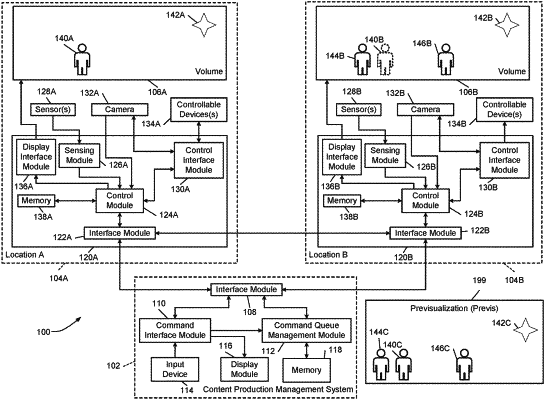| CPC H04N 5/2228 (2013.01) [G06F 9/4881 (2013.01); G06F 9/546 (2013.01); G06Q 10/101 (2013.01); G06F 2209/548 (2013.01)] | 21 Claims |

|
1. A distributed studio management system comprising:
at least one studio computing system including at least one computer readable memory and at least one processor,
wherein the studio computing system is associated with a local first studio production facility that is remote to a remote second studio production facility, and
wherein the at least one processor, upon execution of software instructions stored in the computer readable memory, is configured to perform the operations of:
receiving a set of device commands having commands targeting a first device and a second device in the local first studio production facility and where the set of device commands are related to the remote second studio production facility;
enqueuing a first command from the set of device commands into a first command queue assigned to the first device and a second command from the set of device commands into a second command queue assigned to the second device according to each device command's synchronized execution times; and
causing the first device and the second device to execute commands from their respective command queues relative to each other according to the commands' respective synchronized execution times.
|